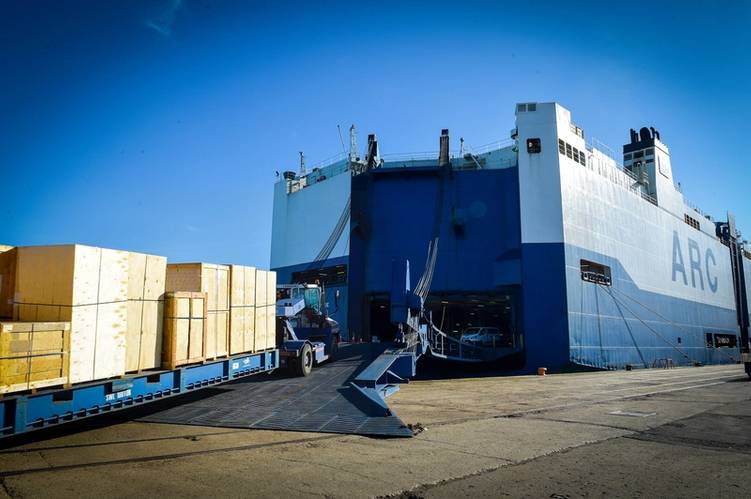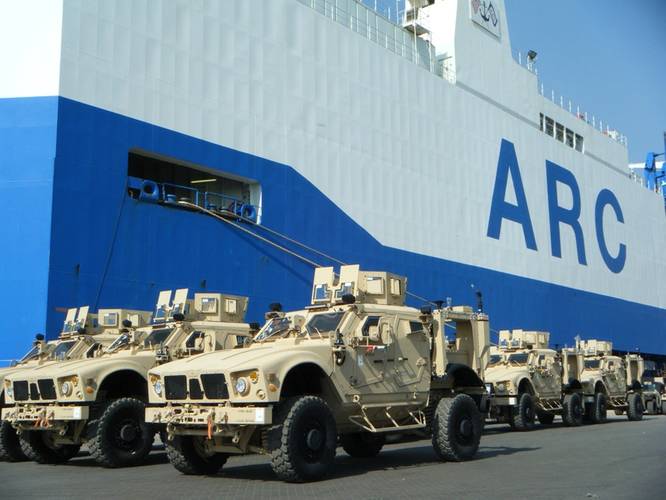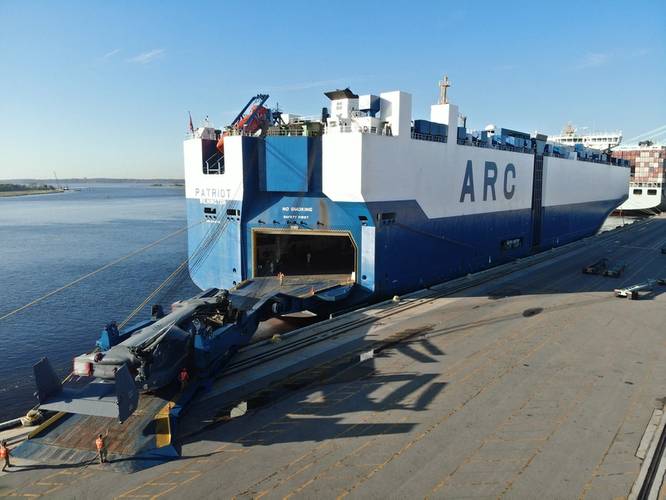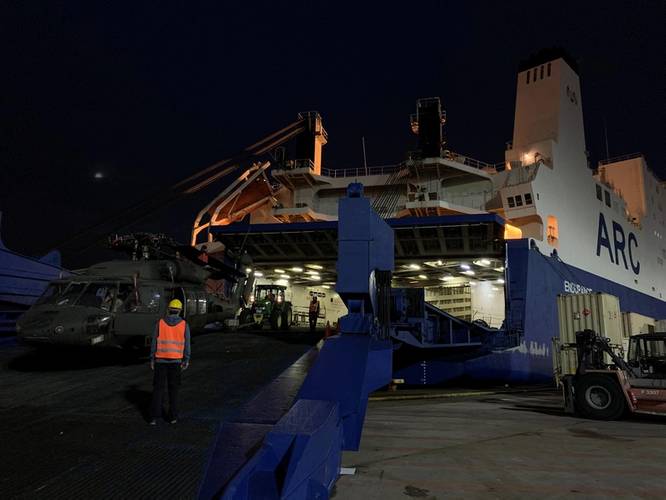ARC Keeps the Cargo Rolling
With a fleet of nine U.S.-flag RoRo ships, American Roll-On Roll-Off Carrier Group (ARC), is the U.S.’ premier commercial RoRo carrier of U.S. government and military cargo. As the world becomes an increasingly contentious place, Eric P. Ebeling, President & CEO, ARC, discusses the vast capabilities of the ARC fleet and logistics network, as well as the challenges and opportunities ahead for U.S.-flag ships in the international trade.
By the numbers’ is a simplistic means to gauge the size and shape of any shipping company, and ARC, with its nine U.S.-flag RoRo ships in the fleet, its 64 shoreside employees and 350 American merchant mariners, ranks at the top as the largest U.S.-flag RoRo operator. But the numbers only tell part of the story and ARC is not only a shipowner. ARC is a multi-modal logistics services company built to serve primarily the needs of the U.S. government transporting heavy lifts of government machinery globally, predominantly into Northern Europe as of the last few years.
Headquartered in Ponte Vedra Beach, FL, ARC ships sail primarily out of three U.S. base ports (Baltimore, Brunswick and Galveston), today sailing primarily into three key Northern European ports (Antwerp, Southampton and Bremerhaven). ARC has operated in the transatlantic trade for more than 35 years. Sitting at the helm is Eric P. Ebeling, long-term with the company and President & CEO since 2015. “We’ve fully recapitalized our fleet since 2016; that’s eight ships we’ve brought into the U.S.-flag fleet and the Maritime Security Program (MSP) and Voluntary Intermodal Sealift Agreement (VISA) since 2016,” said Ebeling. “A lot of work goes into finding the right ships with the right capabilities. It’s exciting and you have to make a business case to make those kinds of investments too, because you’re talking about 30-year assets that cost hundreds of millions of dollars.”
ARC is focused on acquiring and operating the most militarily useful and commercially viable ships for its military, and commercial customers, too. Via its participation in the U.S. government MSP and VISA programs, ARC guarantees capacity to the U.S. government, and in the most recent year around 55% of ARC’s revenue was from ocean cargo carried for the U.S. government, said Christian Heibel, SVP Commercial, ARC. “The underlying bedrock maritime program for the international U.S. flag fleet is the Maritime Security Program; it’s important that that program stays strong and stable,” he said.
 “MSP really only works when it’s hand in glove with the cargo preference laws. Those are the laws that generate the cargo that moves on US flag vessels. Really, it’s cargo – those preference cargoes – that’s the key incentive for US flag operators in international trade. Nobody’s going to operate a US flag ship just for the MSP stipend. It’s a cargo driven industry, and those cargoes help to offset the foreign flag cost differential.”
“MSP really only works when it’s hand in glove with the cargo preference laws. Those are the laws that generate the cargo that moves on US flag vessels. Really, it’s cargo – those preference cargoes – that’s the key incentive for US flag operators in international trade. Nobody’s going to operate a US flag ship just for the MSP stipend. It’s a cargo driven industry, and those cargoes help to offset the foreign flag cost differential.”
Eric P. Ebeling, President & CEO, ARC
Image courtesy ARC
The latest vessel to enter the fleet is the M/V ARC Honor, a 230-m long RoRo with with a 6.5-m high stern opening and a stern ramp rated for cargo weighing up to 320 MT, the company’s fourth U.S.-flag LCTC (large car truck carrier) vessel.
According to Heibel, the characteristics that make the ARC fleet stand out are the door and deck heights and the strengthened ramps and decks to accommodate volumes of heavy military kit.
“We need a high main deck to accommodate certain aviation assets and projects” said Heibel. “For example, every aviation brigade has the Chinooks, and if you can’t carry the Chinooks, you can’t carry the brigade. It also helps us to carry certain project government and commercial cargoes for the ‘high and heavy’ market, which includes mining, agricultural and construction equipment.”
While each ship in the ARC fleet has its own capabilities, Heibel was particularly bullish on the ship Endurance, which he calls “extraordinary.” Endurance is a ro-ro built originally for the mining industry in 1996 and boasts 262,000 sq. ft. of military capacity and nearly 500,000 sq. ft. of commercial capacity. “Although the oldest ship in MSP, Endurance is still the most militarily useful vessel in the U.S.-flag fleet.”
The Importance of MSP
CEO Ebeling is naturally concerned first and foremost with ARC and all that goes into running a safe, efficient, and profitable fleet and company, primarily eying the dual challenges of fleet decarbonization while simultaneously working to ensure that ARC has the people it wants and needs to conduct business. But as the country’s largest RoRo carrier transporting equipment that is central to U.S. presence and influence globally, he also embraces a higher calling to a bigger purpose; namely “the development and implementation of a national maritime strategy that is focused on the importance of a U.S.-flag commercial fleet in international trade.”
“We’re talking about the fleet and the assets here, but as we are the country’s biggest RoRo carrier, we are also keenly aware of the importance of the U.S. Merchant Marine as well, the guys that are actually operating on the ships,” said Ebeling. “Another part that’s an important component that sometimes gets lost: we talk a lot about national defense, national security, and those are obviously important aspects, but we also support the country’s economic security, and that’s increasingly (and equally) important.”
The Maritime Security Program (MSP) was established by President Clinton in 1996 as part of the Maritime Security Act of 1996, and MSP maintains a fleet of 60 commercially viable, militarily useful merchant ships active in international trade.
The MSP fleet is available to support U.S. Department of Defense (DoD) sustainment sealift requirements during times of conflict or in other national emergencies, and the program also provides DoD access to MSP participants’ global intermodal transportation network of terminals, facilities, logistic management services, and U.S. citizen merchant mariners.
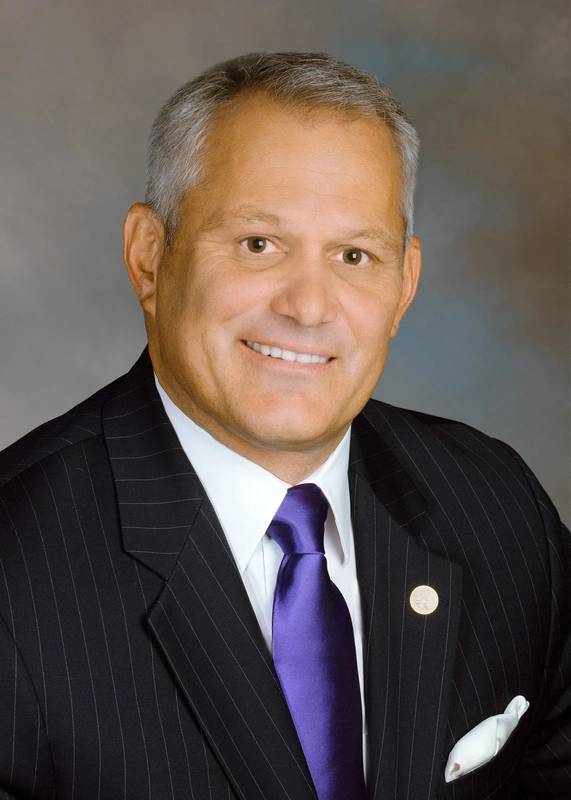 “We need a high main deck to accommodate certain aviation assets and projects.Every aviation brigade has the Chinooks, and if you can’t carry the Chinooks, you can’t carry the brigade. It also helps us to carry certain project government and commercial cargoes for the ‘high and heavy’ market, which includes mining, agricultural and construction equipment.” Christian Heibel, SVP Commercial, American Roll-On Roll-Off Carrier (ARC)
“We need a high main deck to accommodate certain aviation assets and projects.Every aviation brigade has the Chinooks, and if you can’t carry the Chinooks, you can’t carry the brigade. It also helps us to carry certain project government and commercial cargoes for the ‘high and heavy’ market, which includes mining, agricultural and construction equipment.” Christian Heibel, SVP Commercial, American Roll-On Roll-Off Carrier (ARC)
Image courtesy ARC
Ebeling is understandably supportive of the Maritime Security Program (MSP), a program that pays a ‘readiness retainer’ of $5.3m per year per U.S. flag ship in the program, primarily positioned as payment to offset the higher costs of operating U.S.-flag ships and employing U.S. citizen crews as compared to mariners from developing countries which crew the majority of the international commercial fleet.
“I think it’s important and relevant to focus on the commitment and the performance of the U.S. flag fleet and international trade over the decades,” said Ebeling. “If you look at Iraq and Afghanistan, 98% of those cargoes were transported to the region, either on U.S.-flag commercial ships or US. government owned and or controlled ships. Those are all crewed by U.S. citizen merchant mariners; that’s important. Taking a more recent look, something like 90% of the sustainment cargo that supported military options in those countries moved on the U.S.-flag commercial fleet as well. And then of course, more recently, that trend has continued today in Europe with those operations relating to Ukraine.”
Ebeling’s point is highlighting the cumulative true value of MSP and the operations it supports.
“It’s much more than just the floating asset, it’s also the global intermodal networks, it’s the mariners, it’s the systems that the carriers and operators bring to the table, all provided by the MSP fleet, and it would cost the government tens of billions of dollars to try to replicate that … if they could replicate that. And these US flag commercial ships can also operate in places that a gray hull might not be able.”
He cites the Navy League’s most recent maritime policy document for 2023/24, which estimated it would cost $13 billion in taxpayer funds just to do the vessel capacity alone without MSP, not to mention the billions it would add to emulate the logistics network.
“MSP really only works when it’s hand in glove with the cargo preference laws,” said Ebeling. “Those are the laws that generate the cargo that moves on US flag vessels. Really, it’s cargo – those preference cargoes – that’s the key incentive for US flag operators in international trade. Nobody’s going to operate a US flag ship just for the MSP stipend. It’s a cargo driven industry, and those cargoes help to offset the foreign flag cost differential.”
The $5.3m stipend per ship was the amount decided when MSP was last reauthorized in 2019, and at the time Ebeling said the amount was sufficient for its purpose. But with the Covid pandemic and the myriad of changing cost dynamics, from raging inflation to supply chain snarls, he said it’s worth revisiting if that payment is sufficient in 2024.
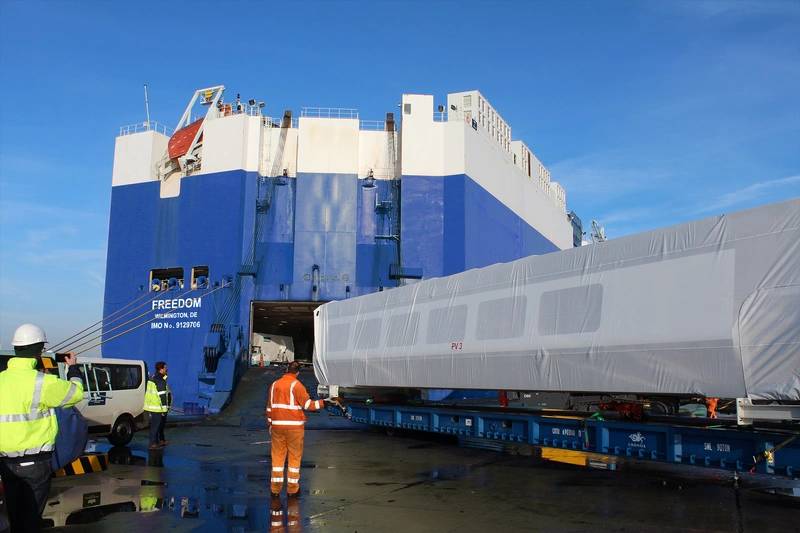 M/V Freedom loads an Amtrak railcar for export in Zeebrugge, Belgium.
M/V Freedom loads an Amtrak railcar for export in Zeebrugge, Belgium.
Image courtesy ARC
ARC & the Wallenius Wilhelmsen ASA Group
As a part of the Wallenius Wilhelmsen Group ASA, ARC is able to tap a shipping, port and logistics value chain globally that measures its experience in centuries, not decades. With experience
“We’re one of four different business units in the group, and there are a lot of synergies,” said Ebeling. “But we have an independent board of US directors at ARC. Our chairman is General John Handy, is a former commander of U.S. Transportation Command. We have a strong U.S. citizen leadership team also, and that’s really to make sure that we maintain U.S. control of the company and our ships, which are carrying those government cargoes. So that’s relevant.”
In total Wallenius Wilhelmsen Group ASA [according to its 2022 Annual Report] encompasses 125 vessels transporting 3.65 million units; eight terminals handling more than 3.1 million units; and 66 services and processing centers, processing more than 5.1 million vehicles. In 2022 it had 8,875 employees in 29 countries.
“We have a lot of synergies within the Wallenius Wilhelmsen group of companies,” said Ebeling. “We can tap into port services, logistics services, other capabilities. So it is a bit of a force multiplier for us, and it does help us in turn, provide better service to our customer through that global network. We are certainly a unique business unit within the Wallenius Wilhelmsen group given our mission and our customer set. But there’s a lot of benefits to being a part of that global company as well.”
This synergy extends too when facing one of the most pervasive challenges facing any shipowner today: embracing and enacting energy transition to hit decarbonization targets.
“There are some really unique challenges around greenhouse gas emissions and decarbonization,” said Ebeling. “That’s an important part of our long-term strategy, but by the same token, industry is not going to do that alone. We need clear policy guidance to guide our strategic decisions, whether that’s from the U.S. government or the IMO.”
As an example of “clarity and consistency,” Ebeling points first to “the simple stuff” … or what reasonably should be considered simple, and that’s scoring a ship’s emission signature. “Are we scoring it on well to wake or are we scoring it on tank to wake? You can get different answers, and that’s just one potential talking point. Also, there are around 16 different fuel options for ships today. But are those fuels available in industrial quantities? Are they available globally? You can’t easily, or cost-effectively change fuel in an existing ship.”
“So really it’s about getting to some uniform, consistent regulation so that we can make the smart capital investments and decisions to continue to grow our US flag merchant fleet.”
 M/V Endurance prepares to load Apache helicopters for an Army Combat Aviation Brigade.
M/V Endurance prepares to load Apache helicopters for an Army Combat Aviation Brigade.
Image courtesy ARC












